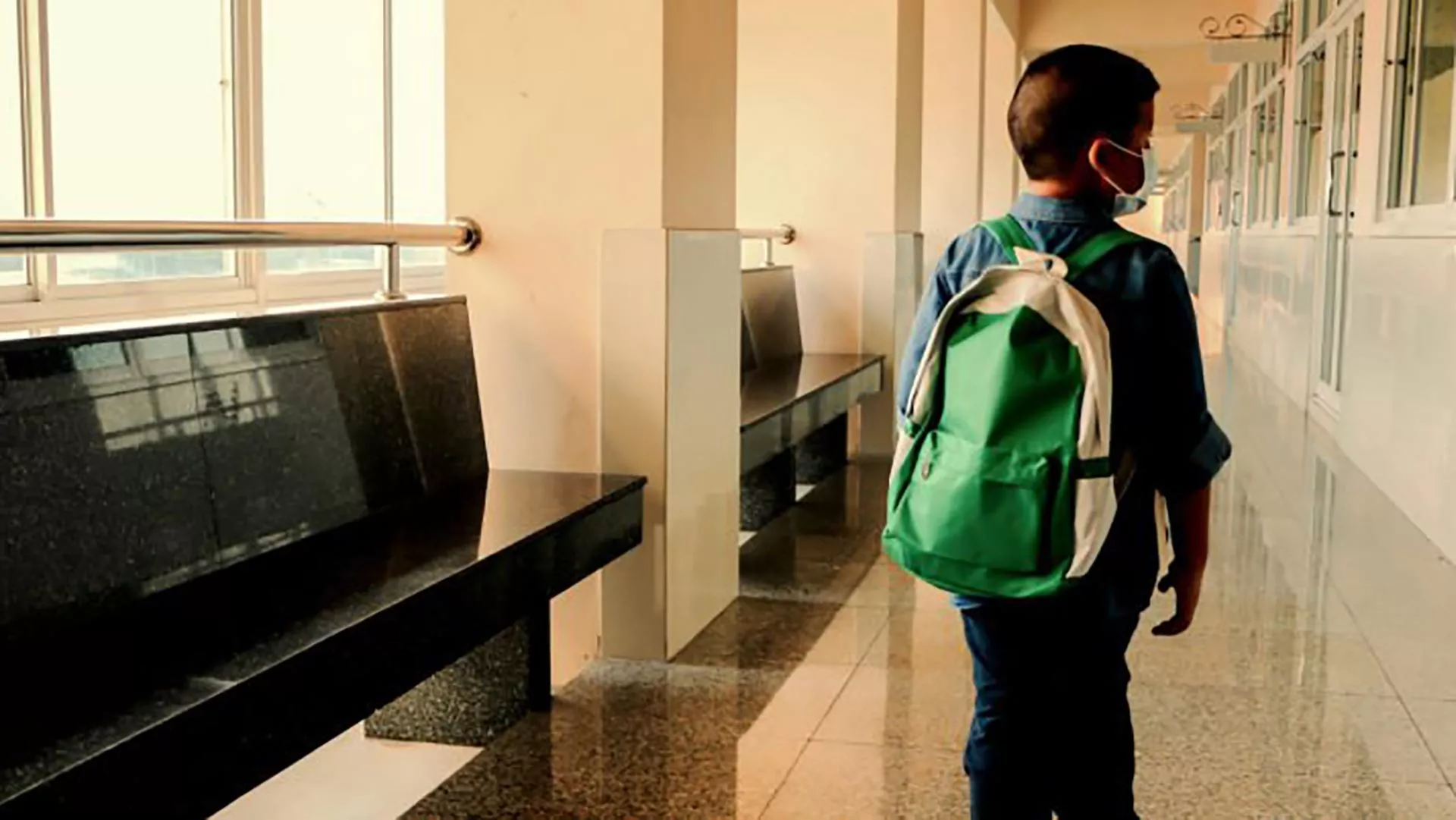With the new school year less than two months away, educators are working in overdrive to figure out the best and safest ways to continue instruction for our country’s students.
On July 9, nearly 30,000 educators registered for a 90-minute NEA webinar, “Safely Returning to In-Person Instruction: Rights and Considerations for Students and Educators."
“We know you are deeply concerned about reopening schools and what it will mean for staff and students,” said NEA General Counsel Alice O’Brien.
Reopening poses unprecedented challenges, and how we address them will vary from state to state and district to district. The webinar's agenda was crafted around the myriad questions NEA has fielded from its members.
The webinar covered a lot of ground, including CDC guidance on how to reopen for in-person instruction and when to reclose, accommodations for high-risk groups, federal leave laws, waivers, health and safety committees, and bargaining for the common good to protect school communities during a global pandemic. Members were advised to always check with their local and state affiliates on their specific concerns.
The CDC is slated to issue additional guidance next week, but O’Brien informed webinar participants that despite continual pressure from the Trump administration to water them down, the CDC has stated that it will not change its current recommendations and the new guidance is intended to supplement them.
O’Brien also clarified the position of the American Academy of Pediatrics (AAP) on reopening, pointing to a new statement released that morning that says AAP does not support reopening where local health advisories go against it and they do support necessary health and safety protections.
The absolute preconditions to reopening are a scientific consensus that the virus has been sufficiently contained and that the local health infrastructure can effectively address current and future outbreaks." - Alice O'Brien, NEA General Counsel
But the top question on almost every educator’s mind: Can the Trump administration really withhold funding if a school doesn’t reopen?
In a word, no.
“They do not have the authority to cut off funding,” O’Brien said. First of all, 90 percent of school funding comes from states and localities. The federal funding that does flow is under statutes that Congress has passed and the Trump administration does not have the authority to rewrite those statutes.
“If they try to, we will see them in court, and we will win,” she said. “Trump and DeVos do not have the right to withhold funds to serve their political needs.”
But with or without Trump’s idle threats, the highest priority, O’Brien said, is the health and safety of the community.
“The absolute preconditions to reopening are a scientific consensus that the virus has been sufficiently contained and that the local health infrastructure can effectively address current and future outbreaks,” she said.
According to the CDC guidance, reopening generally, including in schools, should occur only if a community is improving in six areas: The number of newly diagnosed COVID-19 cases, the number of hospital visits with “COVID-like illness,” visits with “influenza-like illness,” the percentage of positive COVID-19 tests, the capacity of hospitals to treat patients without crisis care, and the robustness of diagnostic testing programs.
But with cases surging across the south, many states haven’t even met the first criteria of a downward trend in cases let alone the rest of the six. In fact, a whopping 43 states currently fail to meet the first condition recommended for safe reopening with less than two months to go before the next academic year.
Distance, Deterrence, Disinfection, Detection
Once we do have cases contained, O’Brien said the CDC has urged all schools to put basic protections in place that she called “the four D’s” — distancing, deterrence, disinfection, and detection.
For effective social distancing, she said many schools will require a hybrid or a staggered schedule.
“Distancing will be the hardest part,” she acknowledged. “It’s difficult to comply at the elementary level for developmental reasons, and it’s also very difficult in high schools and middle schools because students change classes frequently, interact with different teachers, and move through crowded hallways. But the CDC recommends severely limiting that.”
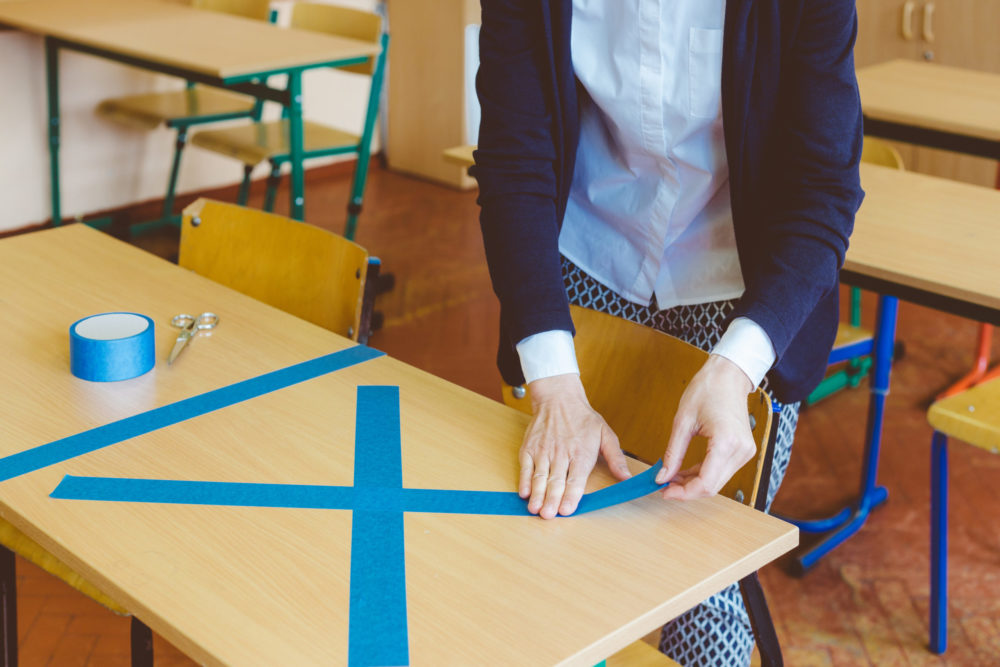 Deterrence will mean frequent hand washing, hand sanitizing, and staying home if feeling sick, among other things. Disinfection, she said, is also fairly straightforward – proper disinfecting products must be used with the proper equipment following CDC protocols throughout the schools. Detection will include screening potentially at school or conducted by parents or guardians at home, quickly identifying and isolating individuals who develop symptoms at school, and quarantining all who they had contact with through contract tracing.
Deterrence will mean frequent hand washing, hand sanitizing, and staying home if feeling sick, among other things. Disinfection, she said, is also fairly straightforward – proper disinfecting products must be used with the proper equipment following CDC protocols throughout the schools. Detection will include screening potentially at school or conducted by parents or guardians at home, quickly identifying and isolating individuals who develop symptoms at school, and quarantining all who they had contact with through contract tracing.
Without implementing all four Ds, however, medical experts predict re-closures will be inevitable, and swift.
“All four are complementary and reinforcing,” she said. “If they’re not all in place, experts say there will be outbreaks and they will come quickly.”
She pointed to a research study by Mathematica for the Pennsylvania Department of Education that predicted that without safety precautions like distancing and hybrid schedules, the average school in the state would have five infections within five days of opening. If all precautions were to be put in place, however, the study found that the length of time the average school would stay open could be increased substantially – up 10 to 15 times longer.
What If I’m High Risk?
Nearly 1.5 million teachers, or one in four, are at higher risk of serious illness if they contract coronavirus, according to an analysis released last Friday by the Kaiser Family Foundation. They suffer from health conditions like diabetes, heart disease, or obesity, or are older than age 65, which make them more vulnerable, the report found.
And, not surprisingly, they are very anxious about what the new school year will look like.
“The main thing you should know,” said NEA staff counsel Keira McNett, “is that you have rights.”
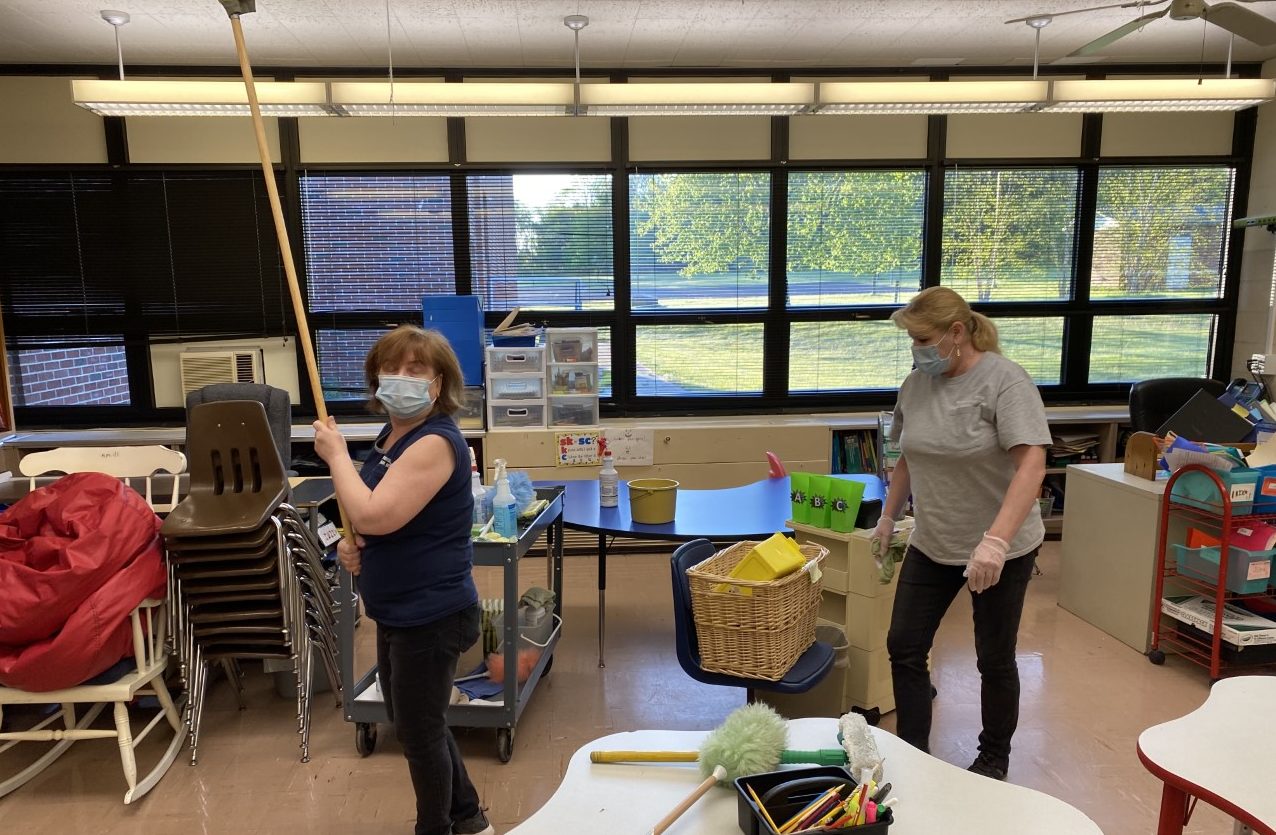 McNett said educators, and all American workers with high risk factors related to a medical condition, may have the right under the Americans with Disabilities Act (“ADA”) to reasonable accommodations. They can seek accommodations to minimize risk, like additional PPE or additional cleaning of surfaces, or accommodations that involve changes in the classroom environment or school building, transfer to a position with less contact with others, remote work, or even temporary leave.
McNett said educators, and all American workers with high risk factors related to a medical condition, may have the right under the Americans with Disabilities Act (“ADA”) to reasonable accommodations. They can seek accommodations to minimize risk, like additional PPE or additional cleaning of surfaces, or accommodations that involve changes in the classroom environment or school building, transfer to a position with less contact with others, remote work, or even temporary leave.
“When requesting temporary leave as an accommodation, it’s a good idea to put it into a time frame, such as until a vaccine is available or community spread is below a particular threshold,” McNett advised. It’s also a good idea to put all requests for an accommodation in writing and seek assistance from your local.
She also warned about broad employer surveys that ask educators about health conditions or risk factors and advised against volunteering this information if you are not seeking an accommodation. “Districts can’t require you to disclose health information unless you are requesting an accommodation,” she said.
What If I Live with Someone Who is High Risk?
Unfortunately, the ADA does not require accommodations to protect family members, but the Family Medical Leave Act (FMLA) may provide unpaid leave if you are caring for a spouse, child, or parent who has a serious health condition.
“Here, too, you really want to look to your local for assistance,” McNett said. “They may be able to work on including within school reopening plans a way to help members protect the health of their families.
NEA Resources
NEA Office of General Counsel:
FAQs on Paid Leave and Unemployment Benefits
What are Educators’ Legal Rights and Remedies?
NEA Guidance on Reopening Schools:
All Hands on Deck
Childcare responsibilities were another huge issue that came up in the questions, McNett said. She pointed to the Emergency FMLA Expansion Act, a temporary new category of leave under the FMLA, which ends December 31, 2020, but can be used for the limited purpose of caring for a son or daughter whose school or daycare is closed due to the coronavirus pandemic.
The total amount of leave is 12 weeks, ten weeks of which is paid at two-thirds regular rate of pay (capped at $200/day).
“Intermittent leave may also be available,” she said. “So you could use it for a few hours a day or for a couple of days a week, which can be a really important option for those trying to juggle work and childcare.”
What Are My Options If I Can’t Be Accommodated?
The Families First Coronavirus Response Act covers nearly all public sector employers, though it, too, expires December 31, 2020. It’s available if you are unable to work or telework for certain COVID-related reasons, including self-quarantine on the advice of a healthcare provider; caring for someone under self-quarantine on the advice of a medical provider; or caring for your child because their school or daycare is closed. The total amount is 80 hours of paid leave, and McNett emphasized that it can be used before any other paid leave benefits you might have.
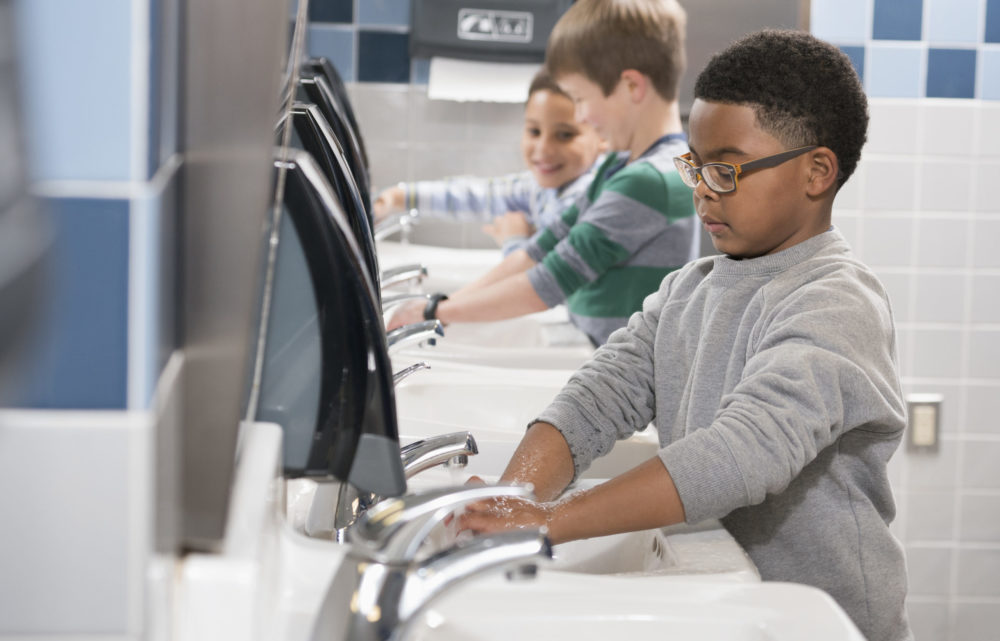
What If I’m Exposed to Coronavirus at Work?
State workers’ compensation programs are likely where educators should look but the state laws and policies are evolving rapidly, so checking with your local and state affiliate are the best place to start. Document as much as possible about how you contracted the virus, and consult with legal counsel, McNett said. She specifically advised keeping track of all COVID test results as well as information about the onset of symptoms, who you were in contact with during the possible infection and the possible sources of exposure at school.
Can We Bargain for Safety During the Pandemic?
In states covered by collective bargaining laws, contract language generally covers salary, benefits, and working conditions. Health and safety during COVID-19 certainly falls under working conditions, but there are strategies for educators in states with or without bargaining statues, said Marcy Magid, a senior policy analyst in NEA’s Collective Bargaining and Member Advocacy department.
If you do have collective bargaining, she recommends adding strong language to the contract and to work with your local affiliate and UniServ members to do so. The language she offered:
The Employer has the responsibility to provide a healthy workplace for all employees. Employees shall not be required to work in unsafe or hazardous conditions or be required to work in unsafe or hazardous conditions or be required to perform tasks that could endanger their health or well-being.
She advises members in non-collective bargaining states to form Health and Safety committees (or repurpose existing wellness committees) comprising teachers, education support professionals, administrators, district employees, school counselors, and school nurses, and to add the same strong language to the committee’s health and safety policies.
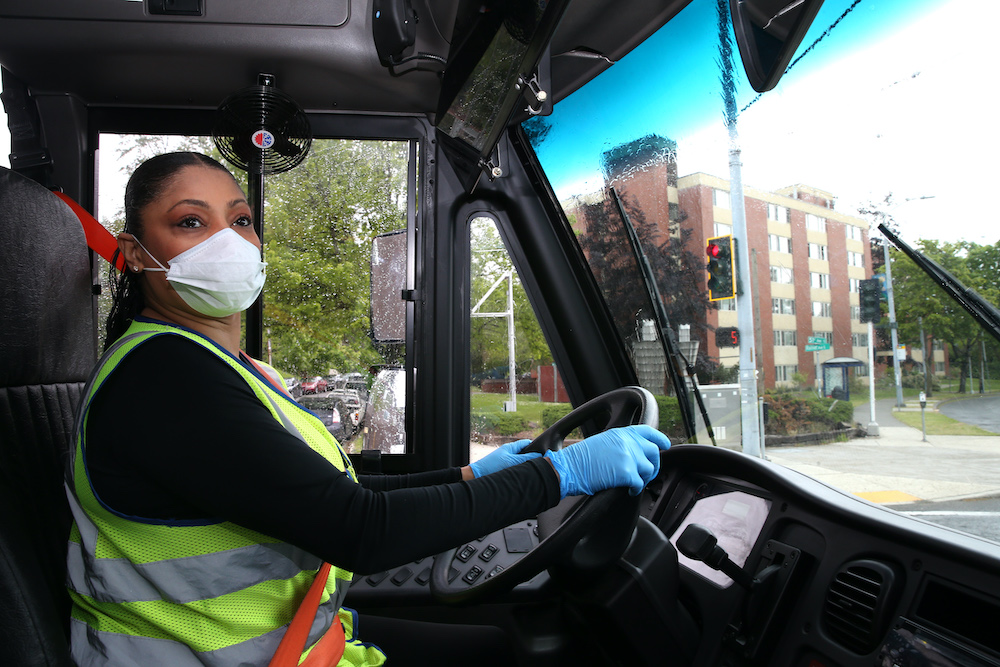 (Photo by Karen Ducey/Getty Images)
(Photo by Karen Ducey/Getty Images)
Health and Safety Committees Work Well in Every State
“There are several reasons we recommend that you form a labor-management health and safety committee,” Magid said. “They ensure that educators get their voices heard, they create the kind of collaboration that is necessary during a crisis like this, and they can help with the constantly evolving nature of COVID 19, addressing in-person instruction, future closures, and ongoing health and safety issues.”
District-level committees are important, but equally critical are local level committees, she said.
“Each school or campus should have its own committee to monitor ongoing developments and varying circumstances of an individual building,” she said. “You could have mold or ventilation issues in one school and not another, for example.”
She also said it’s worthwhile to try to include community and student voices.
“They provide helpful and knowledgeable input for a safe and healthy environment and also really help give educators more leverage with their support,” she said. “After all, learning conditions are working conditions.”
Another important role of the health and safety committee, Magid said, is to develop a communications plan to ensure the entire school community will be informed on an ongoing basis, with the same information at the same time, which goes a long way toward building trust and confidence during uncertain times.
Engage the Community Around the Common Goal of Safe, Equitable Schools
Bargaining for the Common Good (BCG), which brings together unions, students, families, and community organizations around common interests, is a powerful way to engage the community and organize for school improvements beyond wages and benefits, said NEA Director of Collective Bargaining and Member Advocacy Dale Templeton, and could be a critical tool for COVID advocacy.
As we saw during the #RedForEd movement, NEA members engaged the community to fight for everything from smaller class sizes and more access to AP courses, to more enrichment and after school programs, to racial justice and educational equity.
BCG can be used to engage the community in demanding safety and equity during COVID-19, Templeton said. The virus laid bare the institutional racism in our country and the vast inequities in our students’ educational opportunities. It has also had devastating health and economic impacts on people of color.
“With BCG, we can address the longstanding equity and health and safety issues that have plagued so many of our communities,” Templeton said. “BCG is also an opportunity to build long-term relationships between unions and community members to address ongoing issues and challenges.”
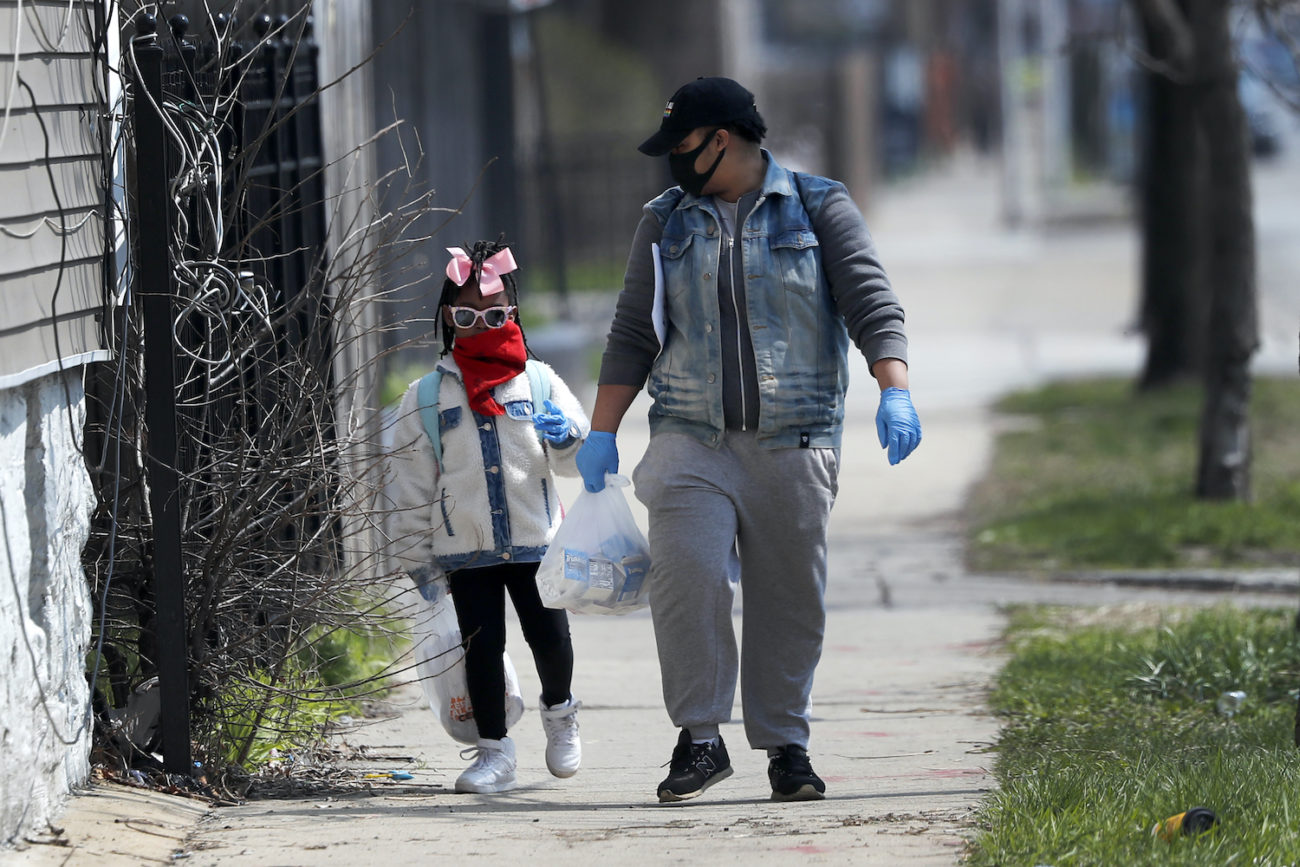 (AP Photo/Charles Rex Arbogast)
(AP Photo/Charles Rex Arbogast)
Educators and their students and families can demand equitable access to the technology students need for hybrid and distance learning; work with the food-service staff and parents to determine the best and safest way of implementing ongoing nutrition and food-distribution to students; and seek additional school nurses, social workers, counselors, occupational, speech, and physical therapists, and other specialized instructional support personnel (SISPs) to support increased student needs.
“There is a lot of talk about reducing staff because of budget cuts, but now is definitely not the time -- we cannot do more with less, and much more is needed to make sure that all schools are safe, healthy, and equitable,” Templeton said. “Engaging the community brings about the power that you need to work for this.”
What’s more, you can make a major difference in the lives of your students and community members by seeking to eliminate or limit foreclosures, eviction proceedings, and actions against homeless residents with school-age children.
Participants were able to post questions during the webinar, some of which were addressed during the webinar. There wasn’t time to answer all of them, but NEA will be providing answers to the questions on NEA’s website educatingthroughcrisis.org, where you can also find an extensive list of content related to COVID-19.
“NEA is with you,” General Counsel Alice O’Brien said in closing. “We will stand up for the rights of educators and communities to make decisions to protect themselves and their families and students.”
Watch the Webinar
NEA Office of General Counsel:
FAQs on Paid Leave and Unemployment Benefits
What are Educators’ Legal Rights and Remedies?
NEA Guidance on Reopening Schools:
All Hands on Deck
